MultiCorrupt: A Multi-Modal Robustness Dataset and Benchmark of LiDAR-Camera Fusion for 3D Object Detection
Till Beemelmanns1
Quan Zhang2
Christian Geller1
Lutz Eckstein1
1Institute for Automotive Engineering, RWTH Aachen University, Germany
2Department of Electrical Engineering and Computer Science, TU Berlin, Germany
Abstract: Multi-modal 3D object detection models for autonomous driving have demonstrated exceptional performance on computer vision benchmarks like nuScenes. However, their reliance on densely sampled LiDAR point clouds and meticulously calibrated sensor arrays poses challenges for real-world applications. Issues such as sensor misalignment, miscalibration, and disparate sampling frequencies lead to spatial and temporal misalignment in data from LiDAR and cameras. Additionally, the integrity of LiDAR and camera data is often compromised by adverse environmental conditions such as inclement weather, leading to occlusions and noise interference. To address this challenge, we introduce MultiCorrupt, a comprehensive benchmark designed to evaluate the robustness of multi-modal 3D object detectors against ten distinct types of corruptions.
- arXiv: https://arxiv.org/abs/2402.11677
- IEEE Explore: https://ieeexplore.ieee.org/document/10588664
- Poster: WePol3.15-Poster.pdf
- Corruption Types
- News
- Benchmark Results
- Metrics
- Installation
- Usage
- TODOs
- Contribution
- Acknowledgments
- Citation
| Severity Level 1 | Severity Level 2 | Severity Level 3 |
|---|---|---|
| Multi-View: | Multi-View: | Multi-View: |
 |
 |
 |
| Severity Level 1 | Severity Level 2 | Severity Level 3 |
|---|---|---|
| BEV: | BEV: | BEV: |
 |
 |
 |
| Front: | Front: | Front: |
 |
 |
 |
| Severity Level 1 | Severity Level 2 | Severity Level 3 |
|---|---|---|
| BEV: | BEV: | BEV: |
 |
 |
 |
| Front: | Front: | Front: |
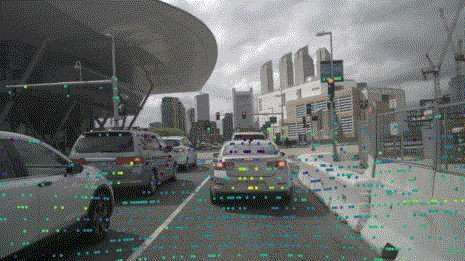 |
 |
 |
| Severity Level 1 | Severity Level 2 | Severity Level 3 |
|---|---|---|
| BEV: | BEV: | BEV: |
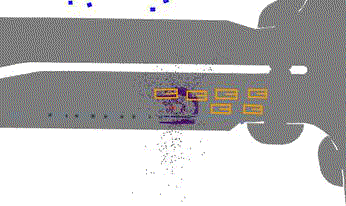 |
 |
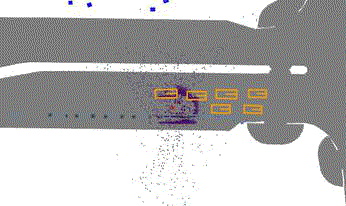 |
| Front: | Front: | Front: |
 |
 |
 |
| Severity Level 1 | Severity Level 2 | Severity Level 3 |
|---|---|---|
| BEV: | BEV: | BEV: |
 |
 |
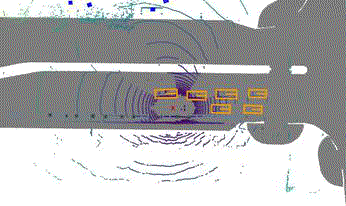 |
| Multi-View: | Multi-View: | Multi-View: |
 |
 |
 |
| Severity Level 1 | Severity Level 2 | Severity Level 3 |
|---|---|---|
| BEV: | BEV: | BEV: |
 |
 |
 |
| Multi-View: | Multi-View: | Multi-View: |
 |
 |
 |
| Severity Level 1 | Severity Level 2 | Severity Level 3 |
|---|---|---|
| BEV: | BEV: | BEV: |
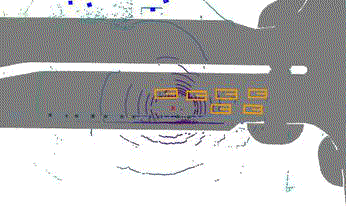 |
 |
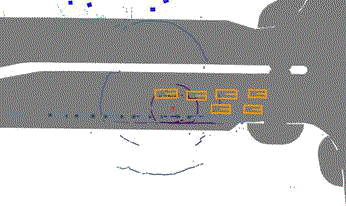 |
| Front: | Front: | Front: |
 |
 |
 |
| Severity Level 1 | Severity Level 2 | Severity Level 3 |
|---|---|---|
| Multi-View: | Multi-View: | Multi-View: |
 |
 |
 |
| Severity Level 1 | Severity Level 2 | Severity Level 3 |
|---|---|---|
| Multi-View: | Multi-View: | Multi-View: |
 |
 |
 |
| Severity Level 1 | Severity Level 2 | Severity Level 3 |
|---|---|---|
| BEV: | BEV: | BEV: |
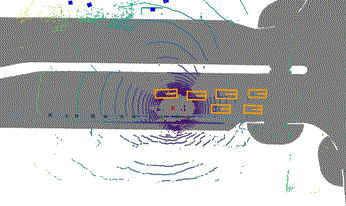 |
 |
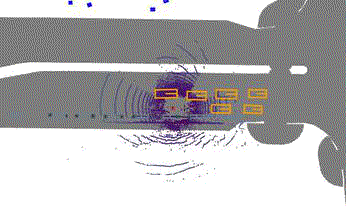 |
| Multi-View: | Multi-View: | Multi-View: |
 |
 |
 |
Note: Right click and click on Open Image in new tab to enlarge an animation
- [19.07.2024] MultiCorrupt paper is now accssible via IEEE Explore, Poster uploaded
- [12.07.2024] v0.0.7 IS-Fusion was added to the benchmark
- [30.03.2024] MultiCorrupt has been accepted to IEEE Intelligent Vehicles Symposium (IV)
- [28.03.2024] v0.0.3 Changed severity configuration for Brightness, reevaluated all models and metrics
- [17.02.2024] v0.0.2 Changed severity configuration for Pointsreducing, reevaluated all models and metrics
- [01.02.2024] v0.0.1 Initial Release with 10 corruption types and 5 evaluated models
| Model | Clean | Beams Red. | Brightness | Darkness | Fog | Missing Cam. | Motion Blur | Points Red. | Snow | Spatial Mis. | Temporal Mis. | mRA |
|---|---|---|---|---|---|---|---|---|---|---|---|---|
| CMT | 0.729 | 0.786 | 0.937 | 0.948 | 0.806 | 0.974 | 0.841 | 0.925 | 0.833 | 0.809 | 0.788 | 0.865 |
| Sparsefusion | 0.732 | 0.689 | 0.975 | 0.963 | 0.767 | 0.954 | 0.848 | 0.879 | 0.770 | 0.714 | 0.777 | 0.834 |
| BEVfusion | 0.714 | 0.676 | 0.967 | 0.969 | 0.752 | 0.974 | 0.866 | 0.872 | 0.774 | 0.705 | 0.742 | 0.830 |
| IS-Fusion | 0.737 | 0.680 | 0.960 | 0.952 | 0.758 | 0.953 | 0.873 | 0.860 | 0.733 | 0.715 | 0.771 | 0.826 |
| TransFusion | 0.708 | 0.633 | 0.993 | 0.988 | 0.754 | 0.985 | 0.826 | 0.851 | 0.748 | 0.685 | 0.777 | 0.824 |
| DeepInteraction | 0.691 | 0.655 | 0.969 | 0.929 | 0.583 | 0.842 | 0.832 | 0.882 | 0.759 | 0.731 | 0.768 | 0.795 |
| Model | Clean | Beams Red. | Brightness | Darkness | Fog | Missing Cam. | Motion Blur | Points Red. | Snow | Spatial Mis. | Temporal Mis. | mRRA |
|---|---|---|---|---|---|---|---|---|---|---|---|---|
| BEVfusion | 0.714 | 0.000 | 0.000 | 0.000 | 0.000 | 0.000 | 0.000 | 0.000 | 0.000 | 0.000 | 0.000 | 0.000 |
| CMT | 0.729 | 18.642 | -1.138 | -0.096 | 9.398 | 2.041 | -0.841 | 8.213 | 9.887 | 17.053 | 8.448 | 7.161 |
| Sparsefusion | 0.732 | 4.264 | 3.179 | 1.821 | 4.429 | 0.297 | 0.280 | 3.242 | 1.887 | 3.699 | 7.228 | 3.033 |
| IS-Fusion | 0.737 | 3.684 | 2.291 | 1.267 | 3.890 | 0.920 | 3.994 | 1.691 | -2.351 | 4.513 | 7.177 | 2.708 |
| TransFusion | 0.708 | -7.210 | 1.799 | 1.146 | -0.552 | 0.340 | -5.412 | -3.296 | -4.220 | -3.626 | 3.850 | -1.718 |
| DeepInteraction | 0.691 | -6.361 | -3.150 | -7.215 | -25.037 | -16.386 | -7.077 | -2.188 | -5.149 | 0.212 | 0.145 | -7.221 |
We adhere to the official nuScenes metric definition for computing the NDS and mAP metrics on the MultiCorrupt dataset. To quantitatively compare the performance between the corrupted dataset and the clean nuScenes datasets, we use a metric called the Resistance Ability (RA). This metric is calculated across the different severity levels with
where
Relative Resistance Ability (
where
git clone https://github.com/ika-rwth-aachen/MultiCorrupt.git
cd multicorruptcd docker
docker build -t multicorrupt_create -f Dockerfile .We use LiDAR_snow_sim to simulate snow in LiDAR point clouds. To make the snow simulation run we need to download the snowflakes:
cd converter
wget https://www.trace.ethz.ch/publications/2022/lidar_snow_simulation/snowflakes.zip
unzip snowflakes.zip
rm snowflakes.zipWe recommend to use run.sh to start the
multicorrupt_create_container in order to generate MultiCorrupt.
Please modify the following pathes according to your local setup.
multicorrupt_data_dir="/work/multicorrupt"
nuscenes_data_dir="/work/nuscenes"
Please make sure that you have downloaded nuScenes
to nuscenes_data_dir.
After setting up the container, you could use VS Code to attach to the container or directly execute the following scripts.
Run the following script to generate a corrupted image data:
usage: img_converter.py [-h] [-c N_CPUS] [-a {snow,fog,temporalmisalignment,brightness,dark,missingcamera,motionblur}] [-r ROOT_FOLDER]
[-d DST_FOLDER] [-f SEVERITY] [--seed SEED]
Generate corrupted nuScenes dataset for image data
options:
-h, --help show this help message and exit
-c N_CPUS, --n_cpus N_CPUS
number of CPUs that should be used
-a {snow,fog,temporalmisalignment,brightness,dark,missingcamera,motionblur}, --corruption {snow,fog,temporalmisalignment,brightness,dark,missingcamera,motionblur}
corruption type
-r ROOT_FOLDER, --root_folder ROOT_FOLDER
root folder of dataset
-d DST_FOLDER, --dst_folder DST_FOLDER
savefolder of dataset
-f SEVERITY, --severity SEVERITY
severity level {1,2,3}
--seed SEED random seedpython converter/img_converter.py \
--corruption snow \
--root_folder /workspace/data/nuscenes \
--dst_folder /workspace/multicorrupt/snow/3 \
--severity 3 \
--n_cpus 24Run the following script to generate a corrupted LiDAR data:
usage: lidar_converter.py [-h] [-c N_CPUS] [-a {pointsreducing,beamsreducing,snow,fog,copy,spatialmisalignment,temporalmisalignment,motionblur}] [-s SWEEP] [-r ROOT_FOLDER]
[-d DST_FOLDER] [-f SEVERITY] [--seed SEED]
Generate corrupted nuScenes dataset for LiDAR
options:
-h, --help show this help message and exit
-c N_CPUS, --n_cpus N_CPUS
number of CPUs that should be used
-a {pointsreducing,beamsreducing,snow,fog,copy,spatialmisalignment,temporalmisalignment,motionblur}, --corruption {pointsreducing,beamsreducing,snow,fog,copy,spatialmisalignment,temporalmisalignment,motionblur}
corruption type
-s SWEEP, --sweep SWEEP
if apply for sweep LiDAR
-r ROOT_FOLDER, --root_folder ROOT_FOLDER
root folder of dataset
-d DST_FOLDER, --dst_folder DST_FOLDER
savefolder of dataset
-f SEVERITY, --severity SEVERITY
severity level {1,2,3}
--seed SEED random seedpython3 converter/lidar_converter.py \
--corruption snow \
--root_folder /workspace/data/nuscenes \
--dst_folder /workspace/multicorrupt/snow/3/ \
--severity 3 \
--n_cpus 64 \
--sweep trueWe recommend to create the following folder structure for MultiCorrupt using
lidar_converter.py and img_converter.py:
-- multicorrupt
|-- beamsreducing
| |-- 1
| |-- 2
| `-- 3
|-- brightness
| |-- 1
| |-- 2
| `-- 3
|-- dark
| |-- 1
| |-- 2
| `-- 3
|-- fog
| |-- 1
| |-- 2
| `-- 3
|-- missingcamera
| |-- 1
| |-- 2
| `-- 3
.
.
.
If you have created MultiCorrupt in the structure above, we recommend you to use our simple evaluation script that iterates over the whole dataset, executes the evaluation and extracts the NDS and mAP metrics.
In the script you would need to replace the pathes for multicorrupt_root,
nuscenes_data_dir and logfile according to your setup.
#!/bin/bash
# List of corruptions and severity levels
corruptions=("beamsreducing" "brightness" "dark" "fog" "missingcamera" "motionblur" "pointsreducing" "snow" "spatialmisalignment" "temporalmisalignment")
severity_levels=("1" "2" "3")
# Directory paths
multicorrupt_root="/workspace/multicorrupt/"
nuscenes_data_dir="/workspace/data/nuscenes"
logfile="/workspace/evaluation_log.txt"
.
.
.- Add more visualization
- Add contribution guidelines
- Coming Soon
- How to contribute
- How to add a model to the benchmark
We thank the authors of
for their open source contribution which made this project possible.
 |
This work has received funding from the European Union’s Horizon Europe Research and Innovation Programme under Grant Agreement No. 101076754 - AIthena project. |
|---|
@INPROCEEDINGS{10588664,
author={Beemelmanns, Till and Zhang, Quan and Geller, Christian and Eckstein, Lutz},
booktitle={2024 IEEE Intelligent Vehicles Symposium (IV)},
title={MultiCorrupt: A Multi-Modal Robustness Dataset and Benchmark of LiDAR-Camera Fusion for 3D Object Detection},
year={2024},
volume={},
number={},
pages={3255-3261},
keywords={Training;Solid modeling;Three-dimensional displays;Laser radar;Object detection;Detectors;Benchmark testing},
doi={10.1109/IV55156.2024.10588664}}
